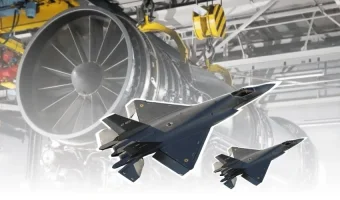
The Indian Navy's pursuit of next-generation conventional submarines, under Project-75I, has reached a pivotal stage.
Two contenders, Germany's ThyssenKrupp Marine Systems (TKMS) and Spain's Navantia, have concluded field evaluation trials showcasing their air-independent propulsion (AIP) systems.
These systems are crucial as they enable submarines to remain submerged for extended periods, enhancing their stealth and operational capabilities.
German and Spanish Showcases
TKMS successfully demonstrated a fully operational AIP system on a German Type 212 submarine. The system met the technical parameters set by the Indian Navy and displayed the required stealth capabilities.However, some concerns have been raised about the specific fuel cells used in the demonstration, with TKMS assuring an upgraded version for the Indian requirement.
Navantia, on the other hand, presented its AIP technology using a different methodology from Germany. While the company does not currently have a submarine with an operational AIP, it showcased the components and a land-based AIP system.
During the trials, the Spanish team charged the batteries of an operational submarine with their AIP system and conducted dives for testing purposes.
Technical Partner Selection and Government Backing
TKMS has partnered with Mazagon Dock Shipbuilders Limited (MDL), while Navantia has joined forces with Larsen & Toubro (L&T). Notably, TKMS's initial reluctance to participate in the project due to the terms and conditions was overcome with the backing of the German government. This support underlines the strategic importance of the Indian submarine market for Germany.AIP Technology and Force Multiplication
The AIP technology is a game-changer for conventional submarines. It enables them to stay submerged for up to two weeks, unlike traditional submarines that need to surface every few days to recharge batteries.This extended submerged endurance significantly enhances a submarine's stealth and operational capabilities, making it a valuable asset in modern naval warfare. The Indian Navy has specified a combination of fuel cell and lithium-ion battery-based AIP systems for optimal performance.
The Path Forward
With both contenders having completed their field evaluations, the Indian Navy is now tasked with preparing a comprehensive technical report. This report will play a crucial role in determining which company's AIP system aligns best with India's requirements.The decision is expected to be influenced by factors such as technical capabilities, technology transfer provisions, indigenous content requirements, and the overall cost of the project.
The submarine deal is estimated to be worth over ₹43,000 crore, making it a significant investment for India's defense sector. The project is also expected to feature prominently in upcoming high-level talks with Germany and Spain, as both countries seek to strengthen their defense partnerships with India.
As the Indian Navy evaluates the technical merits of both contenders, the final decision on the submarine project is anticipated to have significant implications for India's naval capabilities and the geopolitical landscape of the region.



